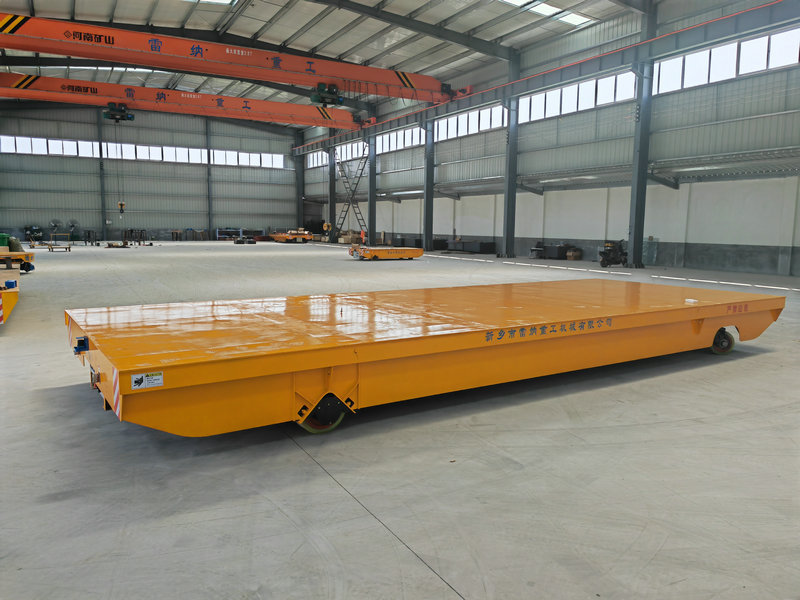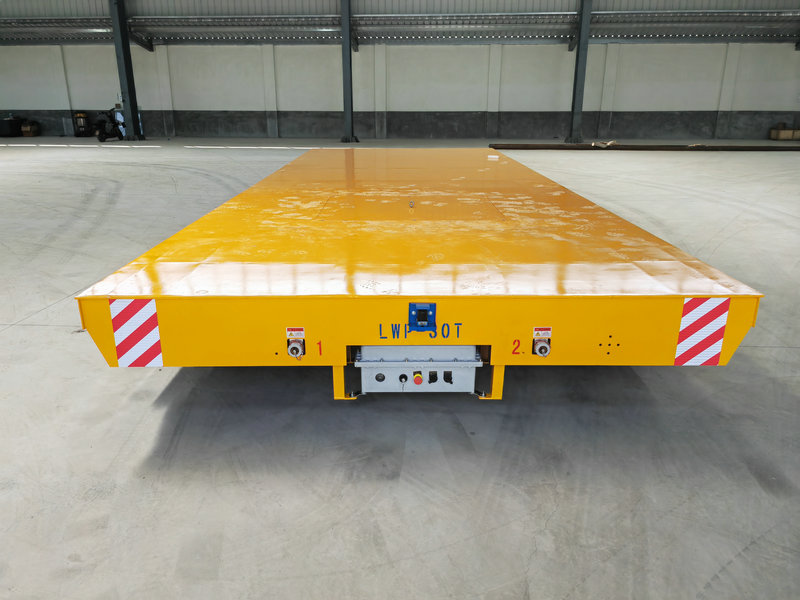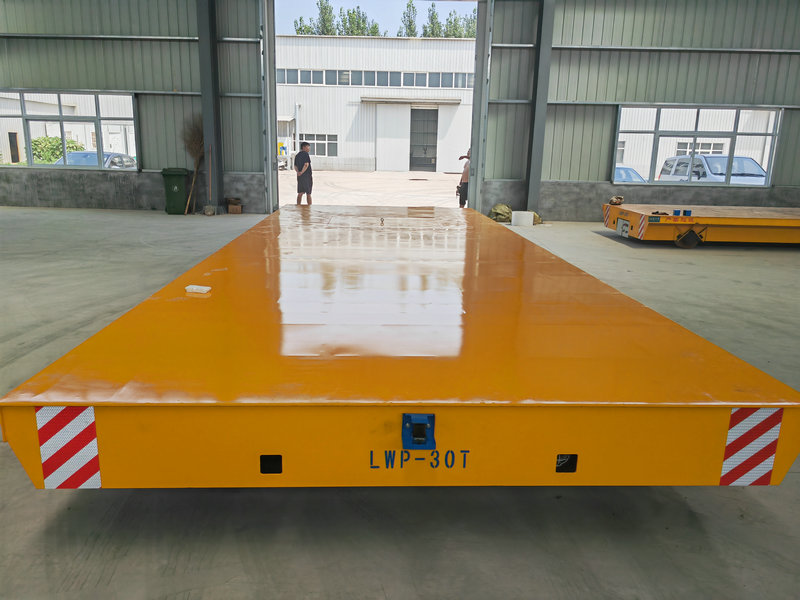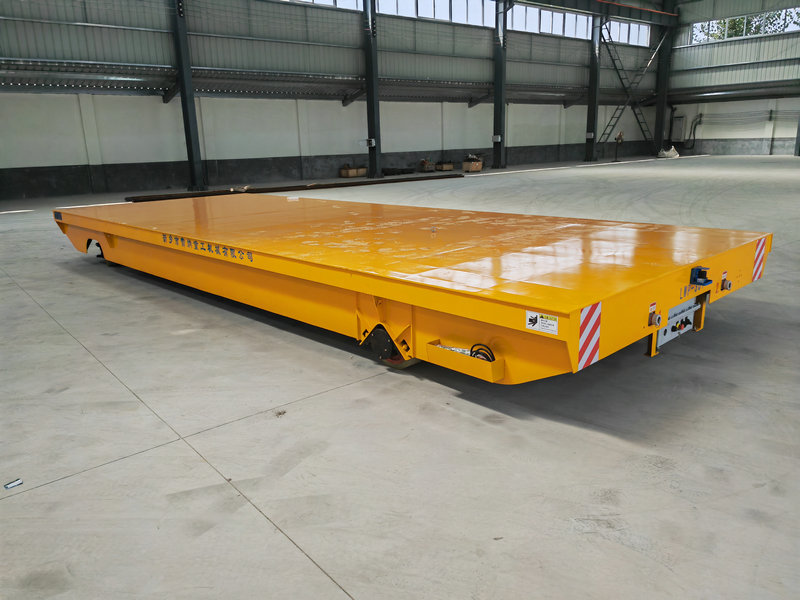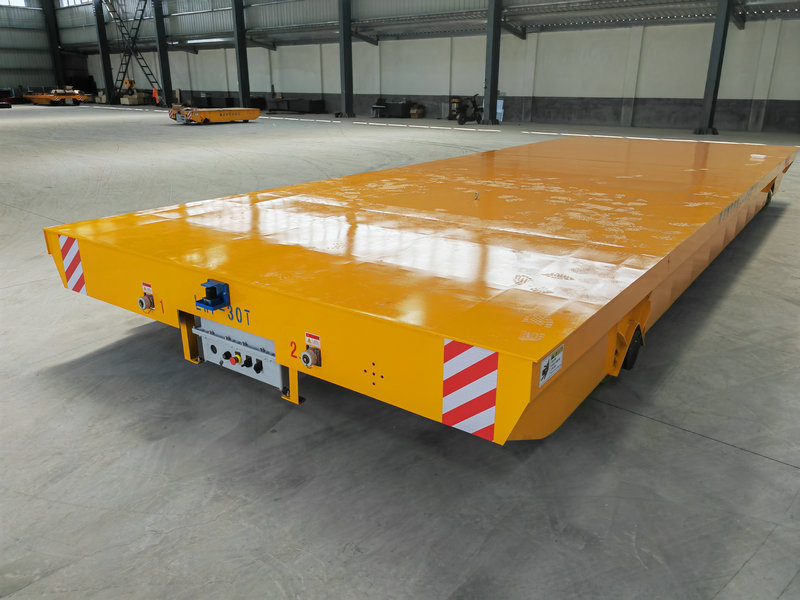Trackless transfer vehicles are electric transport equipment that does not require fixed tracks. They are widely used in factories, warehouses, docks and other places for short-distance transport of materials, equipment or goods. The following is a detailed description of them:
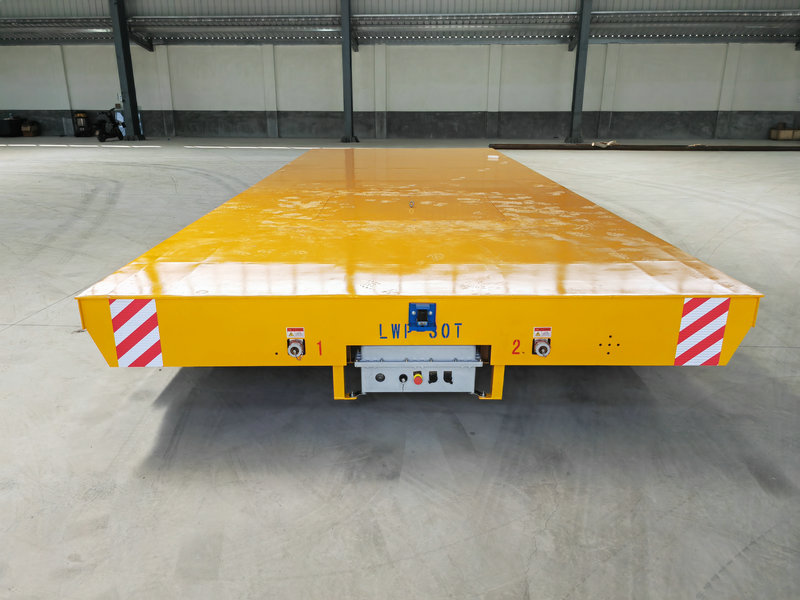
1. Basic structure
Car body: Made of high-strength steel or lightweight alloy to ensure load-bearing capacity and durability.
Drive system: It consists of a motor, a reducer and a drive wheel. It is usually electric drive. Some models are equipped with dual motors or four-wheel drive systems.
Steering system: Flexible steering, common steering wheel steering and differential steering, some models are equipped with hydraulic power steering.
Control system: Including operating handles, control panels and remote controls. Some models are equipped with intelligent control systems to support automatic navigation and obstacle avoidance.
Power supply system: Usually powered by batteries, some models support fast charging or battery replacement.
2. Main features
Trackless design: No need to lay tracks, high flexibility, and adaptable to a variety of venues.
Electric drive: Environmentally friendly, low noise, suitable for indoor and outdoor use.
Strong load-bearing capacity: Depending on the model, the load-bearing capacity ranges from hundreds of kilograms to tens of tons.
Easy to operate: equipped with a user-friendly operation interface, easy to use.
Safe and reliable: equipped with emergency braking, overload protection and anti-collision devices to ensure safety.
3. Application scenarios
Factory workshop: used for material transfer on the production line.
Warehouse logistics: used for cargo loading and unloading and intra-warehouse transportation.
Dock port: used for container and large cargo transfer.
Construction site: used for heavy equipment and material transportation.
4. Technical parameters
Load capacity: 500kg - 50 tons
Driving speed: 0-20km/h
Endurance time: 7-8 hours (depending on battery capacity)
Charging time: 4-6 hours
Turning radius: 2-5 meters (depending on the model)
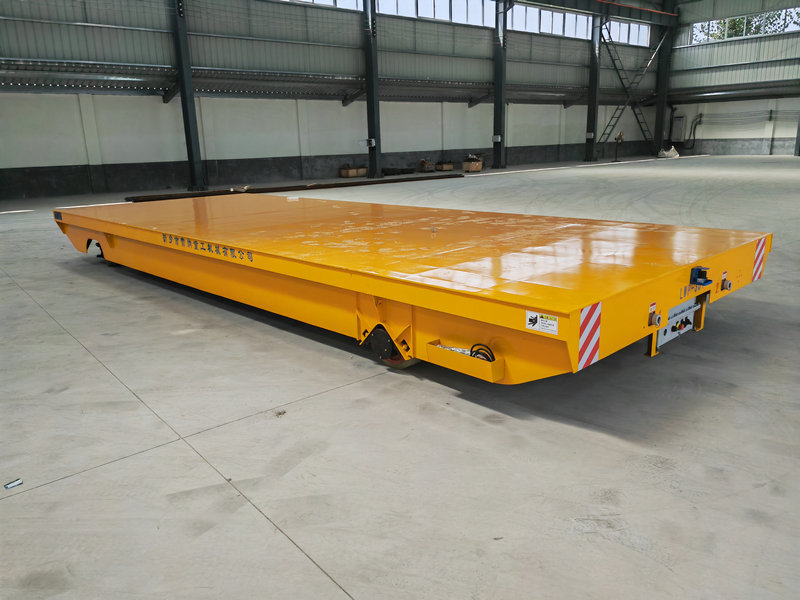
5. Advantages
High flexibility: adapt to complex terrain and narrow space.
Energy saving and environmental protection: electric drive, no exhaust emissions.
Easy maintenance: simple structure, low maintenance cost.
Improve efficiency: reduce manual handling and improve transportation efficiency.
6. Selection suggestions
According to the load requirements: choose a model with appropriate load capacity.
According to the use environment: choose a low-noise model for indoor use and a waterproof and dustproof model for outdoor use.
According to the endurance requirements: choose a model with appropriate battery capacity and charging method.
7. Maintenance
Regular inspection: Check the battery, motor and brake system.
Cleaning and maintenance: Keep the vehicle body clean and lubricate moving parts.
Battery maintenance: Avoid excessive discharge and charge regularly.
8. Future development trends
Intelligence: More models will be equipped with automatic navigation and intelligent control systems.
Lightweight: Use new materials to reduce vehicle weight and improve endurance.
Multifunctionality: Add modular design to adapt to more application scenarios.
